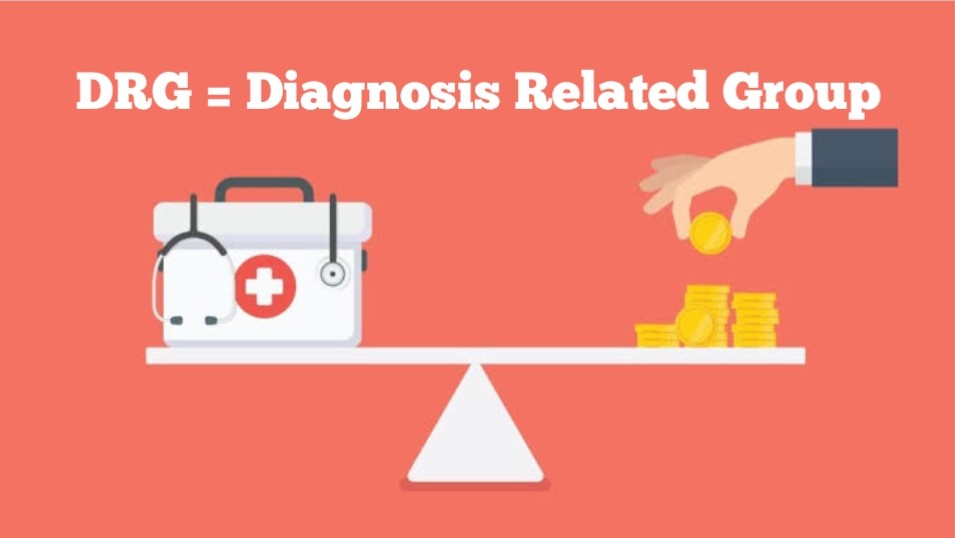In the realm of healthcare, acronyms and abbreviations are commonly used to streamline communication and improve efficiency. One such acronym that frequently appears is “DRG.” Understanding what DRG means in medical terms is essential for healthcare professionals, administrators, and patients.
This article aims to shed light on the concept of Diagnosis-Related Groups (DRGs), their significance in healthcare, and their impact on patient care and hospital reimbursement.
What is DRG?
DRG stands for “Diagnosis-Related Group,” which is a classification system used to categorize patients with similar clinical conditions and resource utilization patterns. DRGs are a method of grouping patients based on their primary diagnosis, procedures performed, age, and other relevant factors. This classification system allows healthcare providers and payers to analyze and compare data, establish reimbursement rates, and evaluate the cost and quality of care provided.
The concept of Diagnosis-Related Groups (DRGs) originated in the 1960s as a response to the need for a standardized method to categorize patients for hospital reimbursement. The initial development of DRGs can be attributed to the work of Dr. Robert Fetter and Dr. John D. Thompson at Yale University in the United States.
In 1967, Fetter and Thompson introduced the concept of grouping patients based on similar diagnoses and resource utilization patterns. Their objective was to develop a system that would allow for fair and efficient reimbursement while incentivizing hospitals to provide cost-effective care.
The first prototype of the DRG system, known as the Yale Refined DRGs, was implemented in the early 1970s. It was primarily used for research purposes to analyze hospital data and study variations in patient outcomes and resource utilization. This early version of DRGs was based on a limited set of diagnostic categories and did not have direct implications for hospital reimbursement.
In the late 1970s, the United States federal government recognized the potential of DRGs as a reimbursement mechanism and initiated efforts to develop a national system. The goal was to establish a standardized payment methodology for Medicare, the government-funded health insurance program primarily serving elderly and disabled individuals.
In 1983, the federal government implemented the Prospective Payment System (PPS) based on DRGs as a means of reimbursing acute inpatient care provided to Medicare beneficiaries. The Centers for Medicare and Medicaid Services (CMS), formerly known as the Health Care Financing Administration (HCFA), played a pivotal role in the development and implementation of this payment system.
Under the PPS, each Medicare patient was assigned a specific DRG based on their primary diagnosis, procedures performed, age, and other relevant factors. Hospitals received a predetermined payment amount for each assigned DRG, irrespective of the actual costs incurred during the patient’s stay. This shift from retrospective reimbursement to prospective payment based on DRGs aimed to control healthcare costs, incentivize efficiency, and promote standardized care.
The introduction of DRGs in the United States had a significant impact on healthcare delivery and financial management. Hospitals were encouraged to manage resources efficiently, improve care coordination, and implement cost-effective practices to maintain financial viability. The system also facilitated comparative analysis and benchmarking, allowing hospitals to evaluate their performance in relation to others and identify areas for improvement.
Over time, the DRG system has undergone revisions and refinements to address limitations and adapt to evolving healthcare needs. Additional diagnosis and procedure codes have been incorporated, and adjustments have been made to account for patient severity, complications, and comorbidities. These modifications aim to enhance accuracy in reimbursement and reflect the complexity of patient conditions.
The concept of DRGs has also been adopted and adapted in various countries around the world as a framework for hospital reimbursement. Different countries have implemented their own versions of DRGs, tailored to their specific healthcare systems, regulations, and needs.
Importance of DRG
Diagnosis-Related Groups have several key implications in healthcare:
- Hospital Reimbursement: DRGs serve as the basis for hospital reimbursement in many healthcare systems. Health insurance payers, including government programs like Medicare and Medicaid, use DRGs to determine the appropriate payment amount for a specific patient’s hospitalization. The reimbursement is typically a fixed amount based on the assigned DRG, irrespective of the actual costs incurred by the hospital.
- Resource Allocation and Utilization: DRGs help hospitals assess and manage resource allocation effectively. By classifying patients into groups with similar conditions, hospitals can estimate the required resources, such as bed occupancy, diagnostic tests, surgical procedures, and medications. This allows hospitals to plan and allocate resources efficiently based on anticipated patient needs.
- Comparative Analysis and Benchmarking: DRGs enable healthcare providers to analyze and compare clinical and financial data across different patient populations and healthcare facilities. It allows for benchmarking performance, identifying variations in care, and implementing quality improvement initiatives. Healthcare organizations can evaluate their outcomes, costs, and efficiency in relation to similar facilities and identify areas for improvement.
- Research and Healthcare Planning: DRG data provides a valuable resource for healthcare research, epidemiology, and healthcare planning. Researchers can analyze large datasets based on DRGs to identify trends, study disease patterns, evaluate treatment outcomes, and inform policy decisions. This information aids in the development of evidence-based guidelines and best practices.
- Clinical Decision-Making: DRGs can also influence clinical decision-making, particularly regarding treatment choices, length of stay, and discharge planning. Healthcare providers consider the assigned DRG when determining appropriate interventions, optimal length of hospitalization, and post-discharge care arrangements.
- Quality of Care and Patient Outcomes: DRGs indirectly impact the quality of care and patient outcomes. Healthcare providers strive to deliver efficient and effective care within the assigned DRG, ensuring that patients receive appropriate interventions and experience positive clinical outcomes. DRGs can serve as a tool to monitor and improve patient care, as they incentivize hospitals to optimize resource utilization and provide cost-effective, high-quality care.
- Coding and Documentation: Accurate coding and documentation are crucial for proper DRG assignment. Healthcare professionals need to document diagnoses, procedures, and relevant clinical information in a complete and precise manner to ensure appropriate DRG classification. This documentation impacts the accuracy of reimbursement and the reliability of data for analysis and decision-making.
Conclusion
Diagnosis-Related Groups (DRGs) are a classification system that plays a crucial role in healthcare reimbursement, resource allocation, and quality improvement. They allow for standardized categorization of patients with similar clinical conditions and provide a basis for comparative analysis, benchmarking, and research. Understanding DRGs is essential for healthcare professionals and administrators to optimize patient care, allocate resources effectively, and navigate the complexities of healthcare reimbursement. By utilizing DRGs appropriately, healthcare systems can promote efficient and high-quality care while ensuring fair and equitable reimbursement practices.






